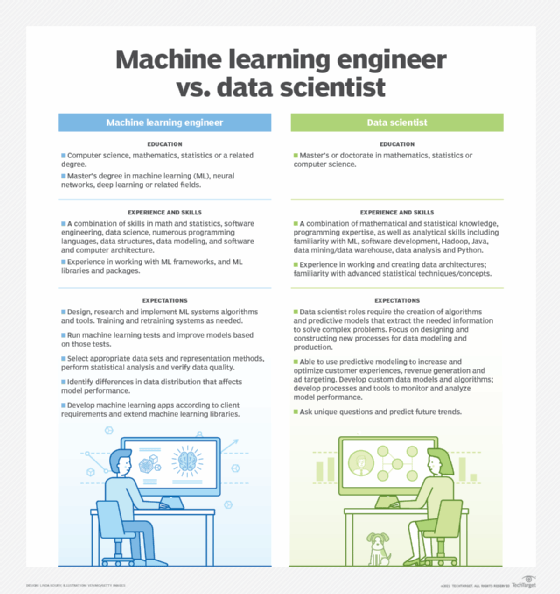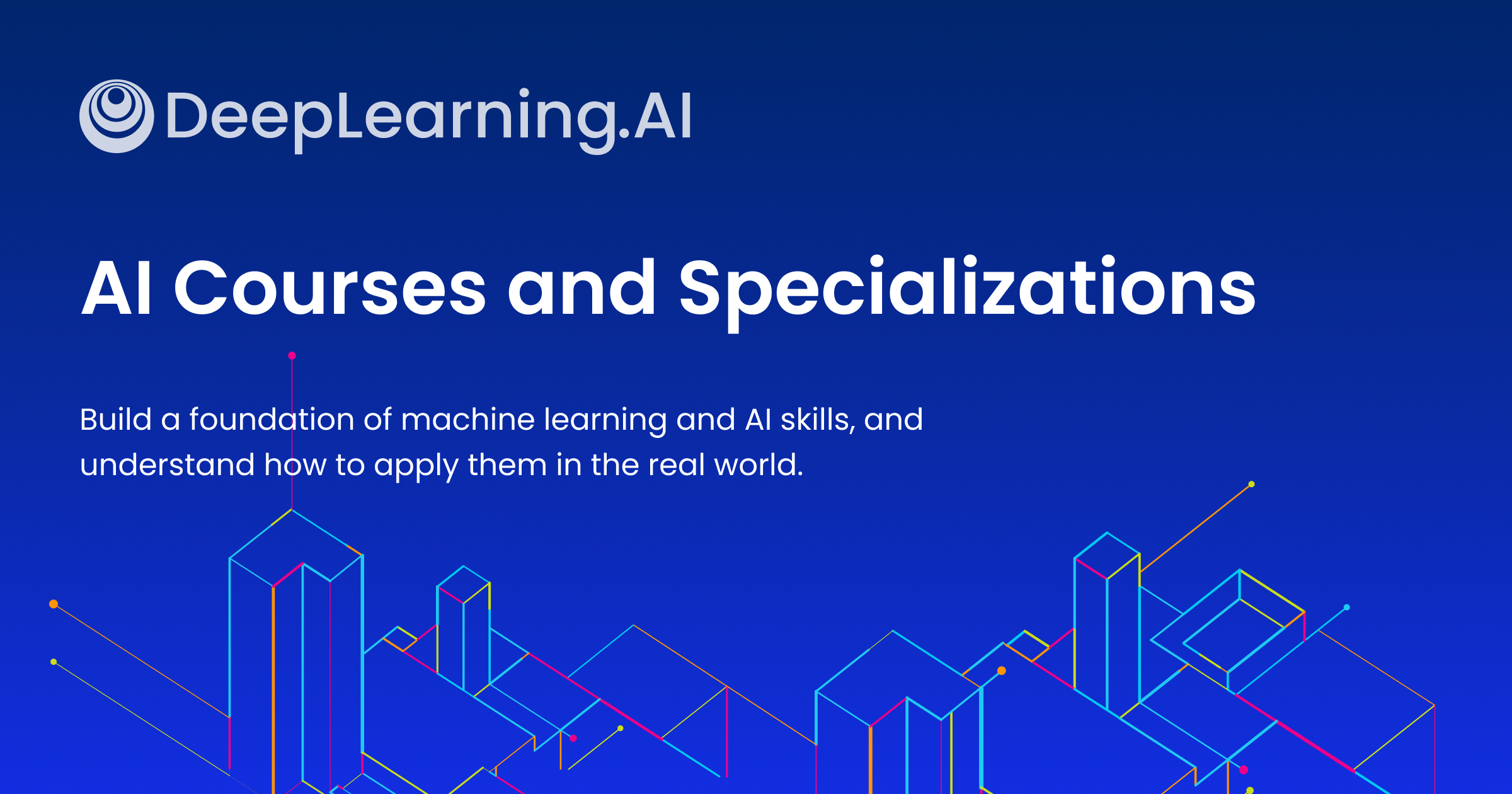All Categories
Featured
Table of Contents
- – Top Guidelines Of Certificate In Machine Learning
- – Best Online Machine Learning Courses And Progr...
- – See This Report about Zuzoovn/machine-learnin...
- – 7 Simple Techniques For Machine Learning Cras...
- – Machine Learning Engineers:requirements - Va...
- – Our Machine Learning Engineer Course Statements
You most likely know Santiago from his Twitter. On Twitter, every day, he shares a whole lot of sensible points about device knowing. Alexey: Prior to we go into our primary subject of relocating from software program design to maker understanding, maybe we can start with your background.
I began as a software designer. I went to college, got a computer science degree, and I started constructing software. I believe it was 2015 when I decided to opt for a Master's in computer system science. Back then, I had no idea concerning artificial intelligence. I didn't have any type of interest in it.
I understand you have actually been making use of the term "transitioning from software application engineering to artificial intelligence". I such as the term "including to my ability the artificial intelligence abilities" more due to the fact that I assume if you're a software program designer, you are already offering a lot of worth. By integrating equipment discovering currently, you're augmenting the effect that you can carry the sector.
That's what I would do. Alexey: This comes back to among your tweets or perhaps it was from your training course when you contrast 2 techniques to discovering. One strategy is the issue based technique, which you just chatted around. You locate a problem. In this case, it was some trouble from Kaggle regarding this Titanic dataset, and you simply discover just how to fix this trouble using a specific device, like choice trees from SciKit Learn.
Top Guidelines Of Certificate In Machine Learning
You first learn mathematics, or direct algebra, calculus. When you understand the mathematics, you go to equipment knowing theory and you learn the concept.
If I have an electric outlet right here that I require changing, I do not want to most likely to college, spend four years comprehending the mathematics behind electricity and the physics and all of that, simply to alter an electrical outlet. I prefer to begin with the outlet and discover a YouTube video that aids me undergo the problem.
Poor example. However you understand, right? (27:22) Santiago: I really like the concept of starting with an issue, trying to toss out what I recognize approximately that issue and understand why it doesn't function. After that get hold of the tools that I need to solve that problem and begin digging deeper and much deeper and deeper from that point on.
That's what I normally suggest. Alexey: Perhaps we can chat a little bit about discovering resources. You stated in Kaggle there is an introduction tutorial, where you can obtain and discover how to make decision trees. At the beginning, prior to we started this interview, you stated a couple of books.
The only requirement for that training course is that you know a little bit of Python. If you go to my profile, the tweet that's going to be on the top, the one that says "pinned tweet".
Best Online Machine Learning Courses And Programs Fundamentals Explained

Even if you're not a developer, you can start with Python and function your method to even more device understanding. This roadmap is concentrated on Coursera, which is a platform that I actually, actually like. You can audit every one of the programs absolutely free or you can spend for the Coursera registration to obtain certifications if you intend to.
So that's what I would certainly do. Alexey: This returns to one of your tweets or maybe it was from your training course when you compare 2 techniques to understanding. One method is the problem based strategy, which you just spoke about. You locate a problem. In this case, it was some problem from Kaggle about this Titanic dataset, and you just learn how to solve this trouble making use of a particular tool, like decision trees from SciKit Learn.
You first discover mathematics, or straight algebra, calculus. When you know the math, you go to device knowing theory and you learn the theory. Then 4 years later on, you finally concern applications, "Okay, how do I utilize all these four years of math to address this Titanic trouble?" Right? So in the former, you sort of save yourself some time, I assume.
If I have an electric outlet right here that I need replacing, I do not wish to most likely to university, spend 4 years recognizing the math behind electricity and the physics and all of that, simply to change an electrical outlet. I prefer to begin with the outlet and find a YouTube video clip that aids me experience the trouble.
Santiago: I actually like the idea of starting with an issue, attempting to toss out what I know up to that problem and comprehend why it doesn't function. Get the tools that I require to solve that trouble and start excavating deeper and much deeper and much deeper from that factor on.
So that's what I generally advise. Alexey: Perhaps we can chat a little bit regarding discovering resources. You pointed out in Kaggle there is an introduction tutorial, where you can get and learn how to choose trees. At the beginning, before we began this interview, you pointed out a pair of publications too.
See This Report about Zuzoovn/machine-learning-for-software-engineers
The only requirement for that program is that you recognize a little bit of Python. If you go to my account, the tweet that's going to be on the top, the one that says "pinned tweet".
Also if you're not a developer, you can start with Python and work your means to more artificial intelligence. This roadmap is concentrated on Coursera, which is a platform that I really, actually like. You can audit all of the courses for totally free or you can pay for the Coursera subscription to obtain certificates if you intend to.
7 Simple Techniques For Machine Learning Crash Course
Alexey: This comes back to one of your tweets or perhaps it was from your program when you compare 2 techniques to knowing. In this instance, it was some issue from Kaggle about this Titanic dataset, and you simply learn exactly how to solve this issue making use of a specific device, like decision trees from SciKit Learn.

You initially learn math, or straight algebra, calculus. When you understand the math, you go to device understanding concept and you learn the theory.
If I have an electric outlet here that I need replacing, I do not wish to go to university, invest 4 years comprehending the math behind electrical energy and the physics and all of that, simply to change an outlet. I prefer to begin with the outlet and find a YouTube video that helps me experience the trouble.
Negative example. Yet you understand, right? (27:22) Santiago: I really like the concept of beginning with a problem, trying to toss out what I understand as much as that trouble and understand why it doesn't function. After that order the tools that I need to fix that issue and start excavating much deeper and deeper and much deeper from that point on.
To ensure that's what I normally recommend. Alexey: Perhaps we can speak a little bit regarding discovering sources. You discussed in Kaggle there is an intro tutorial, where you can get and discover exactly how to make choice trees. At the start, before we started this meeting, you stated a number of books too.
Machine Learning Engineers:requirements - Vault Can Be Fun For Everyone
The only need for that program is that you know a little bit of Python. If you go to my account, the tweet that's going to be on the top, the one that claims "pinned tweet".
Also if you're not a programmer, you can start with Python and work your means to more maker understanding. This roadmap is concentrated on Coursera, which is a system that I really, really like. You can examine every one of the training courses free of charge or you can spend for the Coursera registration to obtain certifications if you desire to.
Alexey: This comes back to one of your tweets or maybe it was from your training course when you contrast 2 strategies to knowing. In this instance, it was some issue from Kaggle about this Titanic dataset, and you just learn just how to solve this trouble using a particular tool, like choice trees from SciKit Learn.
You initially find out mathematics, or linear algebra, calculus. When you know the math, you go to maker discovering concept and you find out the concept.
Our Machine Learning Engineer Course Statements
If I have an electric outlet here that I require replacing, I don't intend to most likely to university, invest 4 years recognizing the mathematics behind electrical energy and the physics and all of that, simply to alter an outlet. I prefer to start with the outlet and locate a YouTube video clip that assists me undergo the problem.
Negative analogy. But you understand, right? (27:22) Santiago: I actually like the concept of beginning with a trouble, attempting to throw away what I recognize up to that issue and comprehend why it does not function. After that get hold of the devices that I need to solve that issue and start excavating deeper and much deeper and deeper from that factor on.

Alexey: Maybe we can chat a bit regarding finding out sources. You pointed out in Kaggle there is an introduction tutorial, where you can get and find out how to make choice trees.
The only need for that training course is that you know a little bit of Python. If you're a developer, that's a terrific starting point. (38:48) Santiago: If you're not a designer, then I do have a pin on my Twitter account. If you go to my account, the tweet that's going to get on the top, the one that says "pinned tweet".
Even if you're not a designer, you can begin with Python and function your means to more artificial intelligence. This roadmap is focused on Coursera, which is a platform that I actually, really like. You can investigate every one of the training courses absolutely free or you can pay for the Coursera subscription to obtain certifications if you desire to.
Table of Contents
- – Top Guidelines Of Certificate In Machine Learning
- – Best Online Machine Learning Courses And Progr...
- – See This Report about Zuzoovn/machine-learnin...
- – 7 Simple Techniques For Machine Learning Cras...
- – Machine Learning Engineers:requirements - Va...
- – Our Machine Learning Engineer Course Statements
Latest Posts
Interview Prep Guide For Software Engineers – Code Talent's Complete Guide
The Complete Software Engineer Interview Cheat Sheet – Tips & Strategies
Software Developer Career Guide – From Interview Prep To Job Offers
More
Latest Posts
Interview Prep Guide For Software Engineers – Code Talent's Complete Guide
The Complete Software Engineer Interview Cheat Sheet – Tips & Strategies
Software Developer Career Guide – From Interview Prep To Job Offers